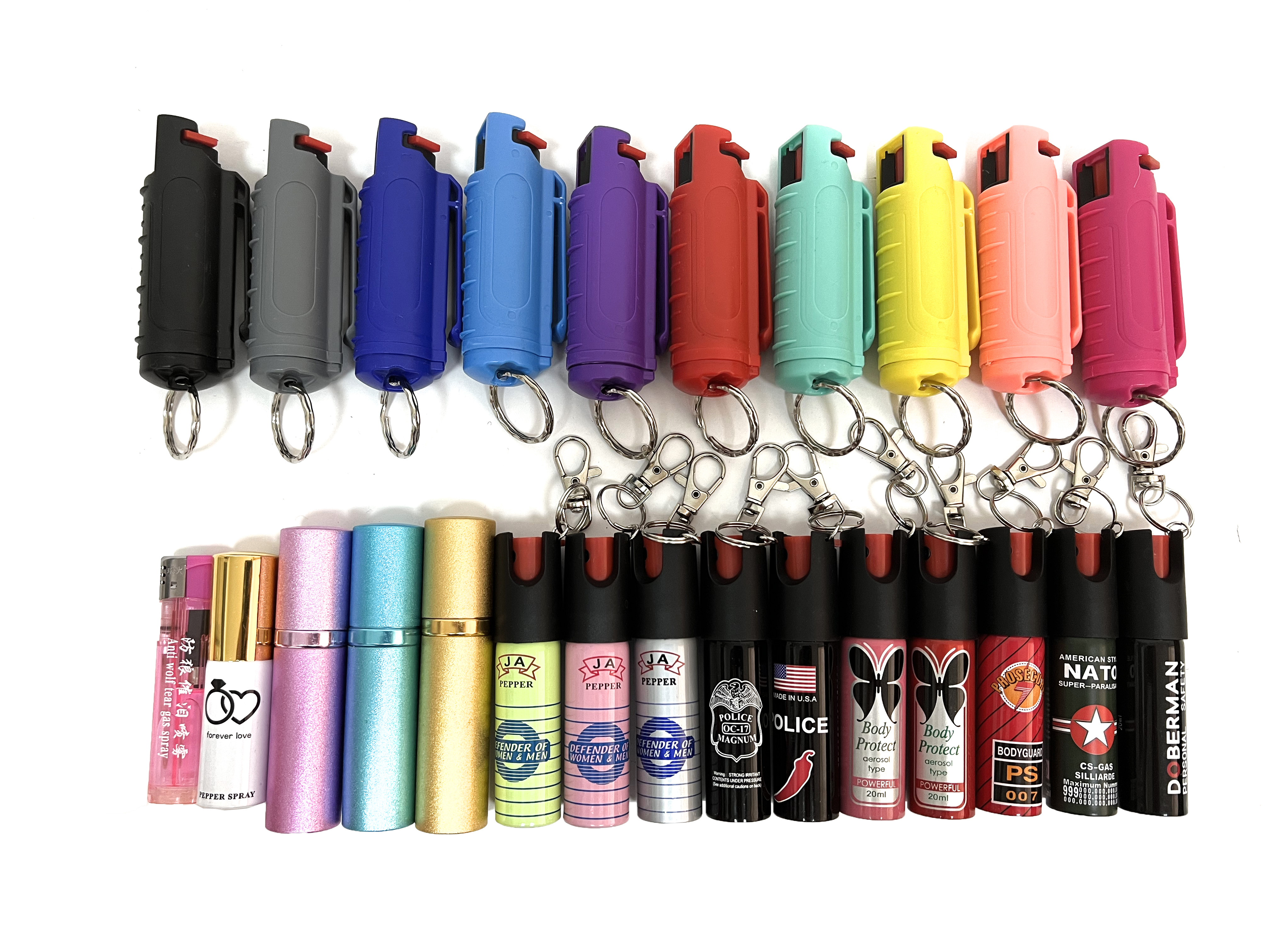
Self-defense is a crucial aspect of personal safety, and having the right tools can make all the difference in a dangerous situation. Among the various self-defense options available, pepper spray has long been a popular choice due to its effectiveness in incapacitating an attacker. However, as technology advances, new variations of pepper spray have emerged, including UV pepper spray. In this article, we will explore the differences between traditional pepper spray and UV pepper spray, helping you make an informed decision about which option is best suited for your self-defense needs.
Understanding traditional pepper spray
Traditional pepper spray is a self-defense tool that has been used for decades. It typically consists of a canister containing a concentrated solution of oleoresin capsicum (OC), a natural compound derived from chili peppers. When sprayed into the eyes of an attacker, OC causes immediate and intense pain, temporary blindness, and difficulty breathing, allowing the victim to escape.
One of the key advantages of traditional pepper spray is its portability and ease of use. Most canisters are compact and can be carried in a pocket, purse, or on a keychain. The spray mechanism allows for a quick and accurate deployment of the chemical agent, even at a distance of several feet.
However, traditional pepper spray does have some limitations. The effects of OC are temporary, typically lasting for 15 to 30 minutes, and may not incapacitate a determined attacker. Additionally, the use of traditional pepper spray may be restricted or regulated in some jurisdictions, so it is important to familiarize yourself with local laws before purchasing and carrying it.
What is UV pepper spray?
UV pepper spray is a modern variation of traditional pepper spray that incorporates ultraviolet (UV) dye into the formula. The UV dye is invisible to the naked eye but can be detected under UV light, allowing law enforcement to identify and track the assailant after the attack.
The addition of UV dye to the pepper spray formula serves as a deterrent to potential attackers, as they know that their identity can be traced back to them even if they wash off the visible dye. This feature enhances the effectiveness of UV pepper spray as a tool for both self-defense and crime prevention.
UV pepper spray works in the same way as traditional pepper spray, causing intense pain, temporary blindness, and difficulty breathing when sprayed into the eyes. However, the UV dye adds an extra layer of security, as it allows law enforcement to collect evidence and potentially link the attacker to other crimes.
Comparing effectiveness and safety
When comparing the effectiveness of traditional pepper spray and UV pepper spray, it is important to consider the intended use and the potential risks involved. Both types of pepper spray are designed to incapacitate an attacker temporarily, giving the victim a chance to escape.
However, the effectiveness of pepper spray can vary depending on factors such as the concentration of OC, the size of the spray pattern, and the distance from which it is deployed. UV pepper spray offers the added advantage of UV dye, which can aid in the identification of the attacker.
In terms of safety, both traditional pepper spray and UV pepper spray can cause discomfort and irritation to the eyes, skin, and respiratory system. It is important to follow the manufacturer’s instructions and use the spray responsibly.
There are some concerns about the potential health risks associated with exposure to pepper spray, particularly for individuals with pre-existing respiratory conditions. UV pepper spray may pose a lower risk in this regard, as the UV dye is not harmful to the body and does not cause the same level of irritation as OC.
Legal considerations for carrying pepper spray
Before purchasing and carrying pepper spray, it is crucial to familiarize yourself with the legal considerations and regulations in your jurisdiction. Laws regarding the use and possession of pepper spray can vary widely from one country, state, or city to another.
In some places, pepper spray is classified as a weapon and is subject to strict regulations. This may include restrictions on the size, strength, and intended use of the spray. In other areas, pepper spray may be legal to carry and use for self-defense purposes, as long as it is used in a reasonable and proportionate manner.
It is also important to note that the use of pepper spray may be subject to legal scrutiny, and individuals who use it in self-defense may still face criminal charges or civil liability if the force is deemed excessive or unnecessary.
Before carrying UV pepper spray or any other self-defense tool, it is advisable to consult with local law enforcement or legal experts to ensure compliance with applicable laws and regulations.
UV pepper spray offers a modern and effective option for self-defense, with the added benefit of UV dye for identification purposes. While both traditional pepper spray and UV pepper spray are designed to incapacitate an attacker temporarily, UV pepper spray provides an extra layer of security by allowing law enforcement to track and identify the assailant.
When choosing between traditional pepper spray and UV pepper spray, it is important to consider factors such as effectiveness, safety, and legal considerations. Regardless of which option you choose, it is essential to use pepper spray responsibly and in accordance with local laws and regulations.
Investing in a quality pepper spray can provide peace of mind and a sense of security in potentially dangerous situations. By staying informed about the differences between traditional and UV pepper spray, you can make an educated choice about which option is best suited for your self-defense needs.












